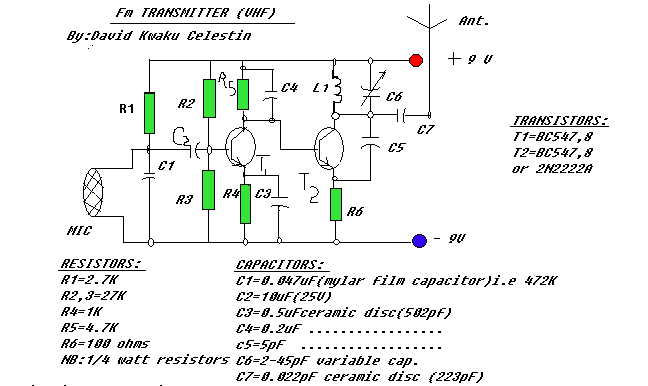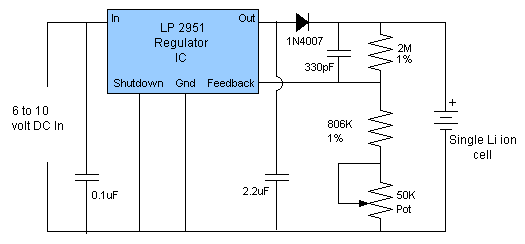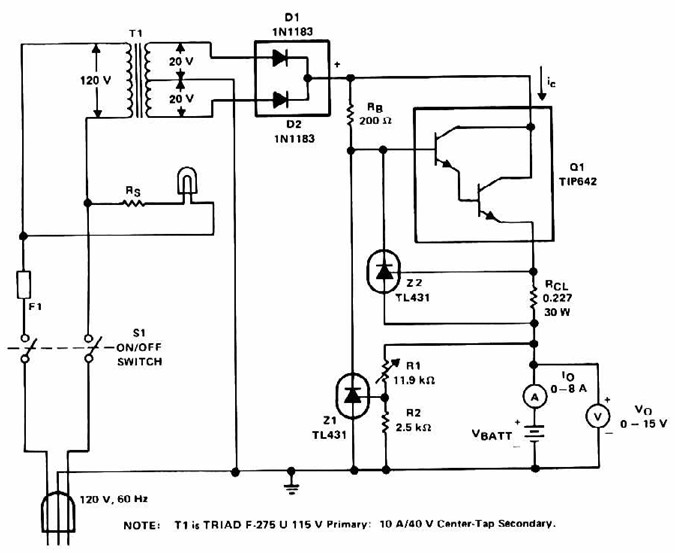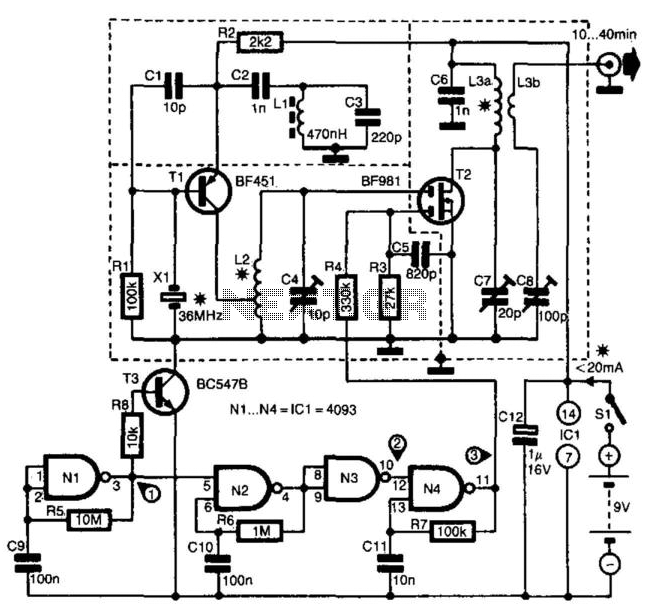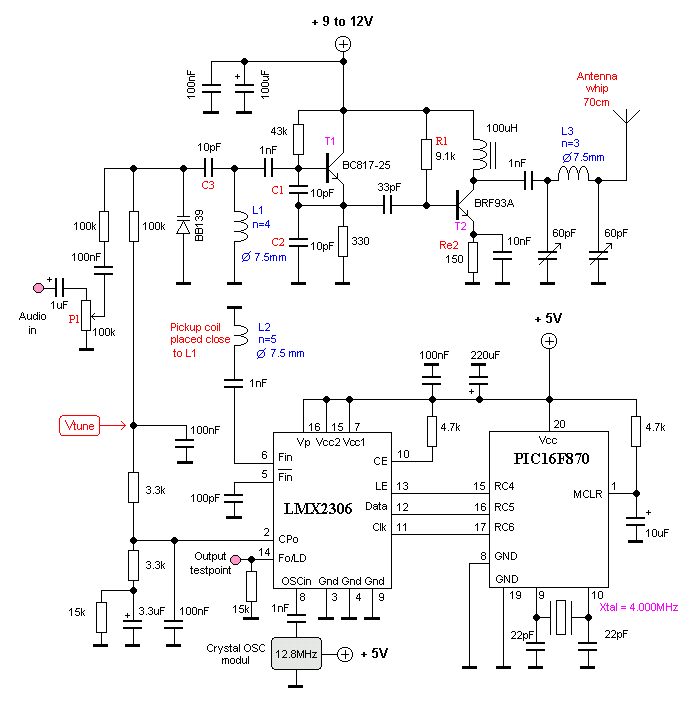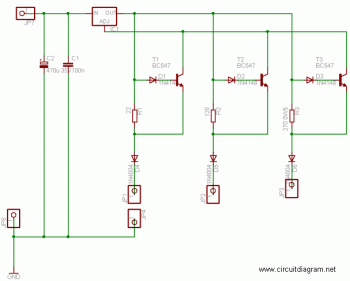
Tiny RC Cars - Transmitter and Charger
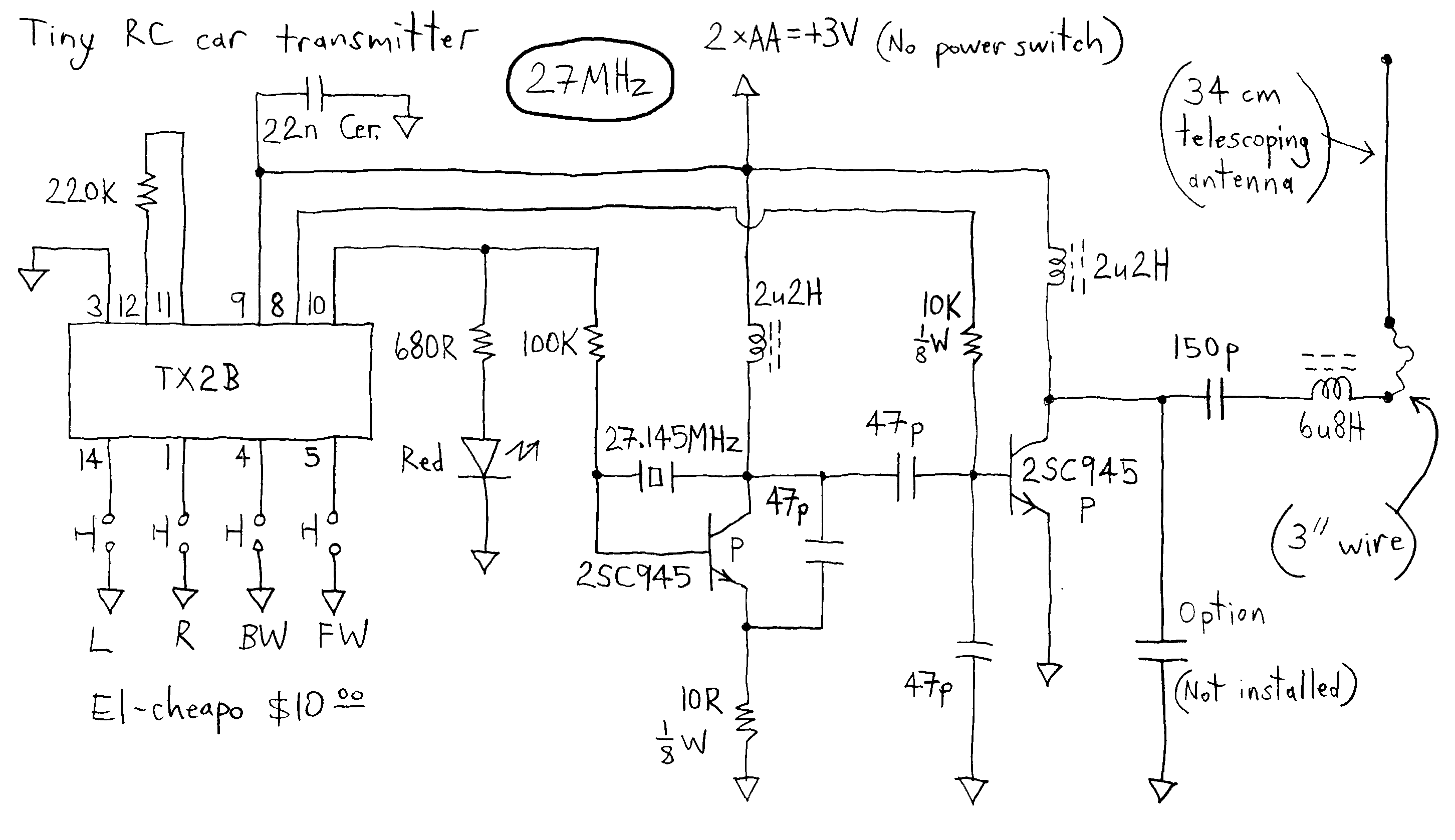
The transmitter runs on only 3V whereas most others run on more voltage. This dirt cheap item uses non-adjustable inductors so it is not possible to tweak for higher output. The common TX2B chip is manufactured by HIGHLAND (SHENZHEN) ELECTRONICS CO LTD and by REALTEK SEMICONDUCTOR CORP and others. More: Datasheets are available on the web but I don`t remember where now. Here is the circuit at 27 and 49 MHz:
The described transmitter circuit operates at a low voltage of 3V, which is notably lower than many comparable devices that require higher voltage levels for operation. This characteristic makes the transmitter an economical option for various applications. The use of non-adjustable inductors indicates a fixed design, which limits the ability to modify the output frequency or power levels. This can be a significant consideration for users needing flexibility in their RF designs.
The TX2B chip, a common component in this circuit, is produced by HIGHLAND (SHENZHEN) ELECTRONICS CO LTD and REALTEK SEMICONDUCTOR CORP, among others. This chip is typically used in low-power RF transmitter applications, making it suitable for short-range communication systems such as remote controls, wireless microphones, and other similar devices.
The circuit operates at two specified frequencies, 27 MHz and 49 MHz. These frequency bands are often utilized for various consumer electronics and can be subject to regulations regarding transmission power and range. The design of the circuit likely includes essential components such as capacitors, resistors, and possibly a crystal oscillator to stabilize the frequency output.
For practical implementation, the layout should ensure minimal interference and optimal performance. Proper grounding and shielding techniques should be employed to mitigate noise and enhance signal integrity. The circuit may also include a simple antenna design, which is crucial for effective transmission and reception of the RF signals.
Datasheets for the TX2B chip and other components may be available online, providing detailed specifications, pin configurations, and suggested application circuits, which can be instrumental for engineers looking to implement or modify this transmitter circuit for specific use cases.The transmitter runs on only 3V whereas most others run on more voltage. This dirt cheap item uses non-adjustable inductors so it is not possible to tweak for higher output. The common TX2B chip is manufactured by HIGHLAND (SHENZHEN) ELECTRONICS CO LTD and by REALTEK SEMICONDUCTOR CORP and others. Datasheets are available on the web but I don`t remember where now. Here is the circuit at 27 and 49 MHz: 🔗 External reference
The described transmitter circuit operates at a low voltage of 3V, which is notably lower than many comparable devices that require higher voltage levels for operation. This characteristic makes the transmitter an economical option for various applications. The use of non-adjustable inductors indicates a fixed design, which limits the ability to modify the output frequency or power levels. This can be a significant consideration for users needing flexibility in their RF designs.
The TX2B chip, a common component in this circuit, is produced by HIGHLAND (SHENZHEN) ELECTRONICS CO LTD and REALTEK SEMICONDUCTOR CORP, among others. This chip is typically used in low-power RF transmitter applications, making it suitable for short-range communication systems such as remote controls, wireless microphones, and other similar devices.
The circuit operates at two specified frequencies, 27 MHz and 49 MHz. These frequency bands are often utilized for various consumer electronics and can be subject to regulations regarding transmission power and range. The design of the circuit likely includes essential components such as capacitors, resistors, and possibly a crystal oscillator to stabilize the frequency output.
For practical implementation, the layout should ensure minimal interference and optimal performance. Proper grounding and shielding techniques should be employed to mitigate noise and enhance signal integrity. The circuit may also include a simple antenna design, which is crucial for effective transmission and reception of the RF signals.
Datasheets for the TX2B chip and other components may be available online, providing detailed specifications, pin configurations, and suggested application circuits, which can be instrumental for engineers looking to implement or modify this transmitter circuit for specific use cases.The transmitter runs on only 3V whereas most others run on more voltage. This dirt cheap item uses non-adjustable inductors so it is not possible to tweak for higher output. The common TX2B chip is manufactured by HIGHLAND (SHENZHEN) ELECTRONICS CO LTD and by REALTEK SEMICONDUCTOR CORP and others. Datasheets are available on the web but I don`t remember where now. Here is the circuit at 27 and 49 MHz: 🔗 External reference
